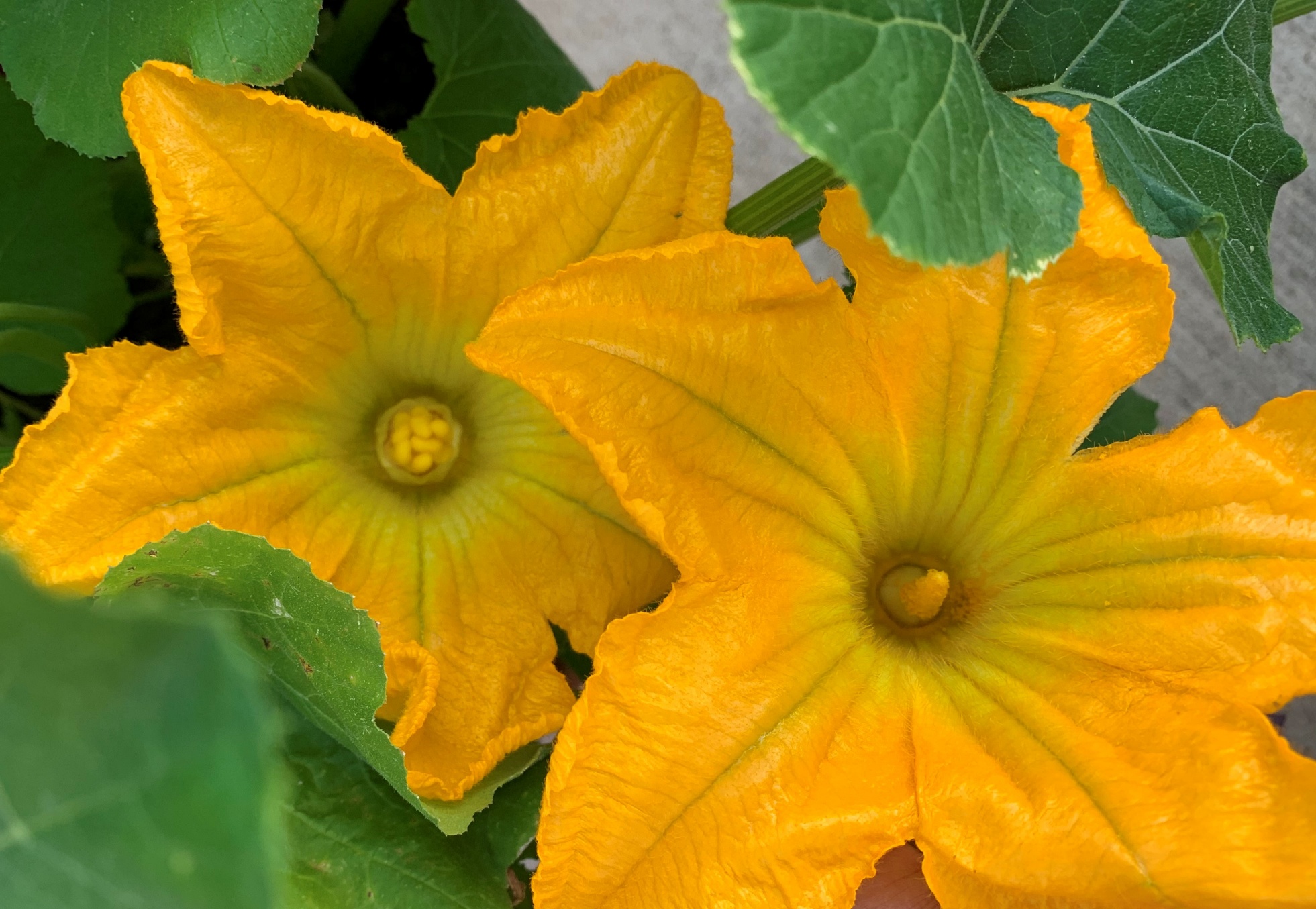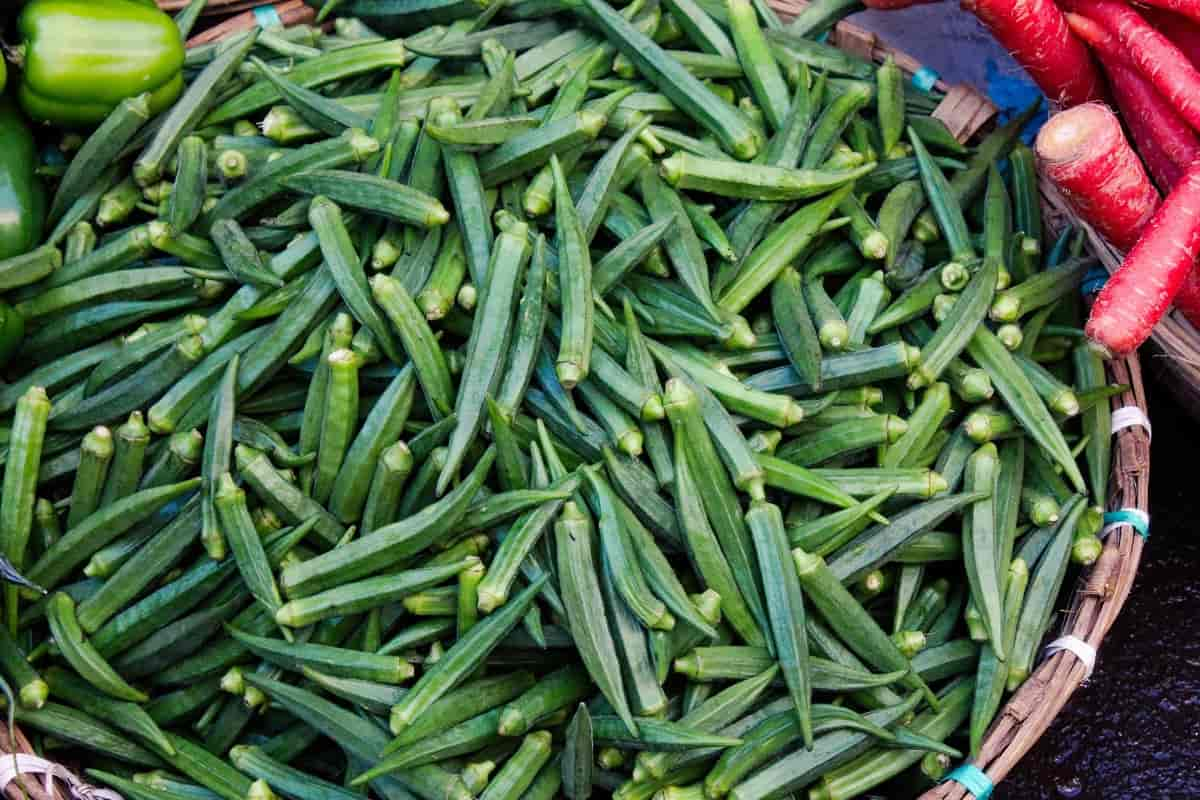Okra And Cucumber: The Perfect Pair
Okra and cucumber are two vegetables that are often grown together in the garden. They have a lot in common, but they also have some key differences. In this blog post, we will explore the benefits of growing okra and cucumber together, as well as some of the ways that they can complement each other.
Benefits of Growing Okra and Cucumber Together
There are several reasons why growing okra and cucumber together can be beneficial. First, they both have similar growing requirements. They both need full sun, well-drained soil, and regular watering. This makes them easy to grow together in the same garden bed.
Second, okra and cucumber can help to deter pests from each other. Okra can help to repel aphids, while cucumber can help to repel cucumber beetles. This can help to keep your garden free of pests, which can save you time and money.
Third, okra and cucumber can help to improve the flavor of each other. Okra can help to add a subtle sweetness to cucumber, while cucumber can help to cut the bitterness of okra. This makes them a great combination in salads, soups, and stews.
How Okra and Cucumber Complement Each Other
In addition to the benefits listed above, okra and cucumber can also complement each other in the following ways:
- Okra's height can provide shade for cucumber plants. Cucumber plants can be sensitive to the sun, so providing them with some shade can help to prevent them from wilting. Okra plants can grow quite tall, so they can provide the perfect amount of shade for cucumber plants.
- Cucumber's leaves can help to suppress weeds. Cucumber leaves can spread out quite wide, which can help to suppress weeds in the garden bed. This can save you time and effort weeding, which can free you up to focus on other garden tasks.
- Okra and cucumber can be harvested at different times. Okra is typically harvested when the pods are young and tender. Cucumbers, on the other hand, can be harvested when they are young and tender, or when they are fully mature. This means that you can harvest okra and cucumber from the same garden bed throughout the growing season.
Conclusion
As you can see, there are many benefits to growing okra and cucumber together. They have similar growing requirements, they can help to deter pests from each other, they can improve the flavor of each other, and they can complement each other in the garden. If you are looking for two vegetables that are easy to grow and that can add a lot of flavor to your meals, then okra and cucumber are a great option.
Okra and cucumbers are two popular vegetables that can be grown together in the garden. They have similar growing requirements, such as full sun and moist, well-drained soil. Cucumbers can help to suppress weeds around okra plants, and their vining growth can provide shade for the okra. Okra can also help to attract pollinators to the garden, which will benefit both plants.
If you are considering growing okra and cucumbers together in your garden, I recommend visiting Gardenia Inspiration. This website has a wealth of information about companion planting, including a list of plants that are good companions for okra and cucumbers. You can also find tips on how to plant and care for these vegetables, as well as recipes for using them in your cooking.
FAQ of okra and cucumber companion plants
Question 1: Can okra and cucumbers be planted together?
Answer: Yes, okra and cucumbers can be planted together. They both have similar water and soil requirements, and they can help each other by attracting beneficial insects and repelling pests. However, it is important to plant them far enough apart so that the cucumbers have enough space to spread out. A good rule of thumb is to plant them at least 2 feet apart.
Question 2: What are some other good companion plants for okra?
Answer: Some other good companion plants for okra include:
- Peppers: Peppers help to repel cabbage worms, which can be a destructive nuisance to okra plants.
- Melons: Melons need the same amount of sun and water as okra, so they make good companions.
- Basil: The strong fragrance of basil repels a number of pests that like okra, including flea beetles, stinkbugs, spider mites, aphids, and whiteflies.
- Lettuce: Lettuce is a fast-growing crop that matures while okra plants are still growing. This means that you can harvest lettuce from your garden while you're waiting for the okra to mature.
- Eggplants: Eggplants prefer shade, so they can grow under the shade of a tall okra plant.
Question 3: What should not be planted next to okra?
Answer: There are a few plants that should not be planted next to okra, including:
- Squash: Squash can attract the same pests as okra, so it's best to avoid planting them together.
- Sweet potatoes: Sweet potatoes can be susceptible to nematodes, which can also be a problem for okra.
- Solanaceous crops: Solanaceous crops, such as tomatoes, peppers, and eggplant, should not be planted next to okra after okra has been planted in the same spot. This is because these crops may be plagued by nematodes from the previous year.
Question 4: What are the benefits of companion planting?
Answer: There are many benefits to companion planting, including:
- Attracting beneficial insects: Some companion plants attract beneficial insects, such as ladybugs and bees, which help to control pests.
- Reducing the risk of disease: Some companion plants can help to reduce the risk of disease by attracting beneficial bacteria and fungi that help to keep the soil healthy.
- Improving soil quality: Some companion plants can help to improve soil quality by adding nutrients or aeration.
- Improving pollination: Some companion plants can help to improve pollination by attracting pollinators such as bees and butterflies.
Question 5: How do I know which companion plants are right for my garden?
Answer: There are a few things to consider when choosing companion plants for your garden, including:
- The plants' needs: Make sure that the companion plants you choose have similar water and soil requirements.
- The plants' growth habits: Consider the plants' growth habits when choosing companion plants. For example, you wouldn't want to plant a tall plant next to a short plant that would get shaded out.
- The plants' pests and diseases: Choose companion plants that can help to control each other's pests and diseases.
Image of okra and cucumber companion plants
5 different images of "okra and cucumber companion plants" from Pinterest:
- Image 1: Okra and cucumber plants growing in a garden bed. The okra plants are taller and have spiky green leaves, while the cucumber plants are shorter and have more rounded leaves.
- Image 2: A close-up of okra and cucumber flowers. The okra flowers are yellow and star-shaped, while the cucumber flowers are white and trumpet-shaped.

- Image 3: A row of okra and cucumber plants with some herbs in between. The herbs include chamomile, dill, and mint.
- Image 4: A diagram showing the benefits of planting okra and cucumber together. The diagram shows that both plants attract beneficial insects, help to suppress weeds, and improve the soil quality.
- Image 5: A photo of a harvest of okra and cucumbers. The okra pods are green and the cucumbers are yellow.

Post a Comment for "Okra And Cucumber: The Perfect Pair"